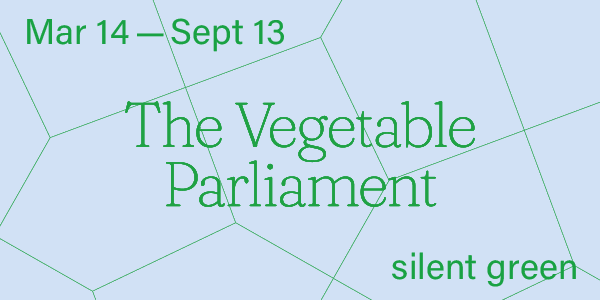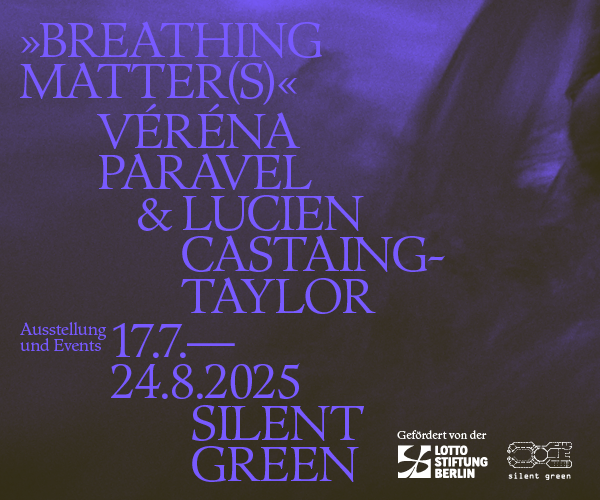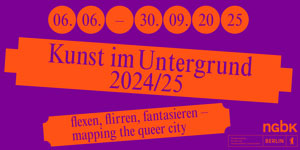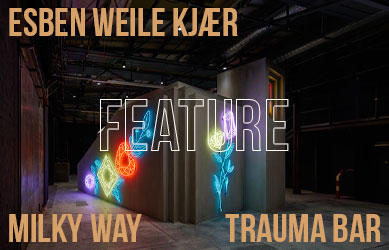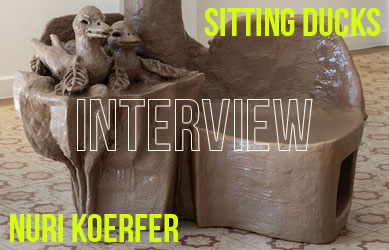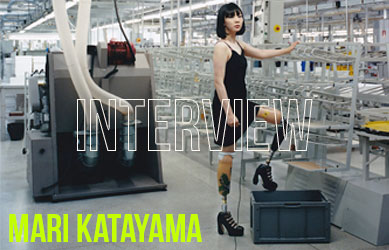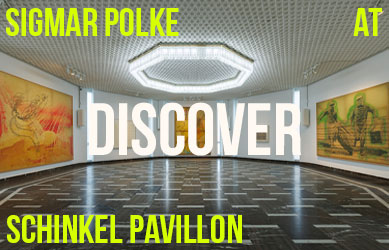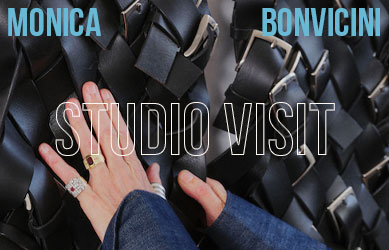by Annalisa Giacinti // July 22, 2025
This article is part of our feature topic Water.
After more than a decade, Tatort Paderborn—a series of site-specific exhibitions aimed at reappraising Paderborn’s public space, which started in 2007 and ran through 2014—made its return to the West-German city with a third instalment titled ‘Der Fluss bin ich’ (I am the River). The river in question, the Pader, is the subject and setting of this year’s edition, curated by Marijke Lukowicz and Sophia Trollmann: the shortest in Germany, it springs in the heart of Paderborn and lends the city its name, before flowing into the bigger tributary Lippe after only 4.6km.
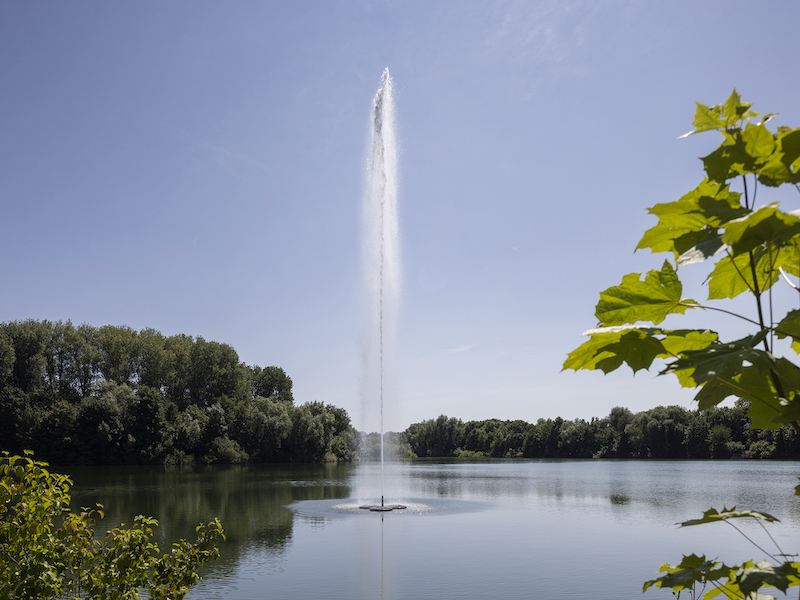
Jeppe Hein: ‘Did I miss something,’ 2001, installation view ‘Tatort Paderborn 2025: Der Fluss bin ich’ // Photo by Hanna Neander, courtesy of Jeppe Hein, KÖNIG GALERIE, Berlin; 303 GALLERY, New York and Galleri Nicolai Wallner, Copenhagen
“How would it be if we viewed it as an equal citizen of the city? What new perspectives emerge if the river is understood not just as a natural phenomenon, but as a part of urban life?” ask the curators, inviting the artists partaking in the show to engage with the river as if it were a “creative partner, a co-curator,” an independent actor, rather than only a natural element. Together, the 10 installations made by local and international artists aim at tackling ecological, social, historical and cultural aspects related to the city’s landscape. They are distributed along the river’s bank to extol its intrinsic biological diversity and richness.
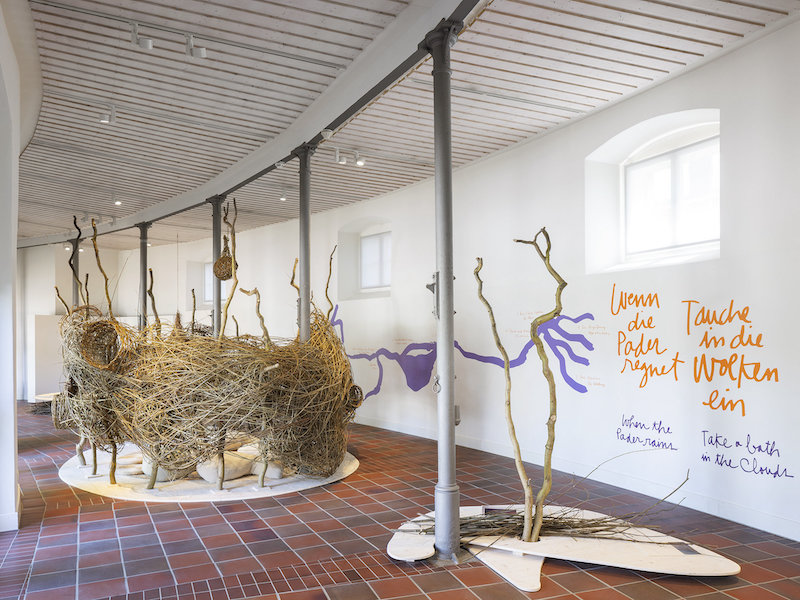
Daniela Brasil: ‘Wenn die Pader regnet, tauche in die Wolken ein,’ 2025, installation view in ‘Der Fluss bin ich’ // Photo by Hanna Neander
The bike tour planned by the curators to visit the exhibition is linear and almost chronological; it starts 50 meters underground, virtually near the river source. ‘See Me’ is a two-part sound installation by Utrecht-based artist and composer Anushka Chkheidze, which leads us into the vault cellar of the Theological Faculty Paderborn, where a pumping system was developed in the 16th century to supply the town with water from the river. Chkheidze mixes field recordings with the Faculty’s choral singing to create an “acoustic portrait of the city” that aptly meets the curatorial prompt, meshing human voices and the river ripples in a minimal yet polyphonic composition.
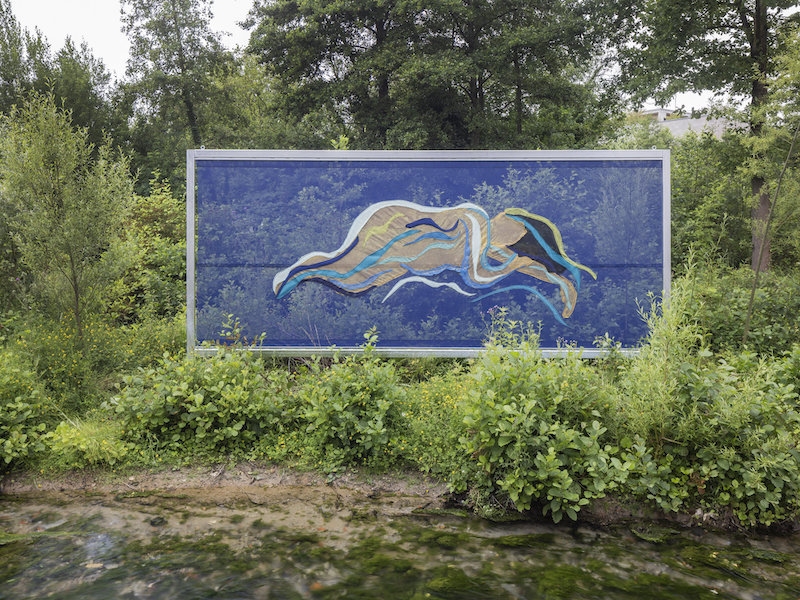
Sophie Utikal: ‘I want to lay down with you,’ 2025, installation vie in ‘Der Fluss bin ich’ // Photo by Hanna Neander
Further along, Berlin-based artist Sophie Utikal invites us to pause and take in the surroundings. ‘I want to lay down with you’ consists of three wide tapestries spread out at different points of the watercourse. Made of fine jute and in a soft color palette, the hand-sewn pieces depict faceless women in various states of repose, lying down by the river or sleeping in a hammock. Utikal places her works in carefully chosen spots: where there were once mills and factories that exploited the river’s resources, there are now revitalized green areas, the newly created Padersee floodplain and gardens. With her works, she emphasizes calmness, passivity and vulnerability—the importance of rest for humans and nature, too.
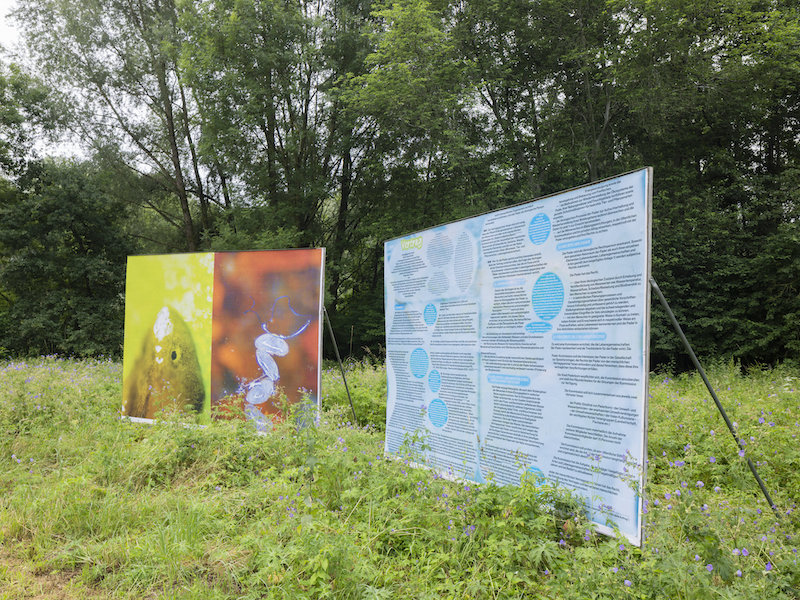
Anne Duk Hee Jordan: ‘A Human Reconciliation with Water,’ 2025, installation view in ‘Der Fluss bin ich’ // Photo by Hanna Neander
Utikal’s subdued call for care ethics and equality is echoed by Anne Duk Hee Jordan in ‘A Human Reconciliation with Water.’ Combining technology and activism, the multimedia artist investigates the essence of the river, performing a “blood test” to detect its oxygen levels and pollutants, while also translating its underwater sounds into a music composition released on a vinyl record, and close-ups of the water into a film. More compellingly, Duk Hee Jordan collaborates with a lawyer to develop a contract working towards the river’s well-being and legal rights. The purpose of the agreement—printed in German, Arabic and Turkish (the languages spoken most in Paderborn) on two large billboards installed along the Pader for everyone to read—is to ensure the lasting coexistence between Paderborn’s citizens and environment. It limits the discharge of wastewater and pollution, the use of water for human purposes and activities, soliciting the city’s population to be accountable for the river’s ecological health.
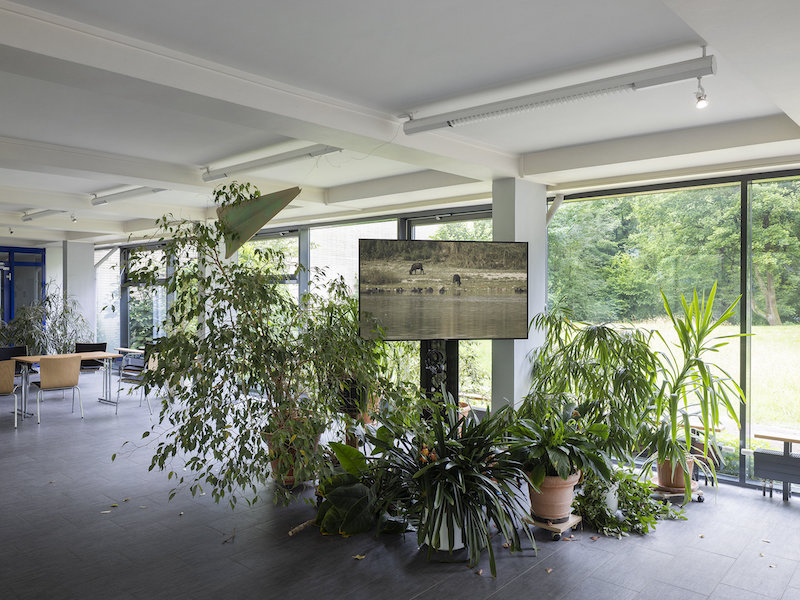
Pallavi Paul: ‘The Memory of Water,’ 2025, installation view in ‘Der Fluss bin ich’ // Photo by Hanna Neander
With slight variations on the theme, other works by Daniela Brasil, Pallavi Paul, Berlin architecture collective raumlabor and Lex Rütten & Jana Kerima Stolzer from thisisinternet propose more visual and conceptual interpretations of our interaction with the Pader. While the curatorial framing promises a dialogue between art and nature—a point reiterated at every stop of the tour and leaving less space for individual interpretation than didactic commentary—it missed the chance to develop a critical framework that would have given more specificity and contemporary resonance to a theme otherwise too broad and overly familiar. As a result, some of the works present a too literal take on the subject, paying a perfunctory homage to the river with stainless steel bubbles or a human-sized willow nest.
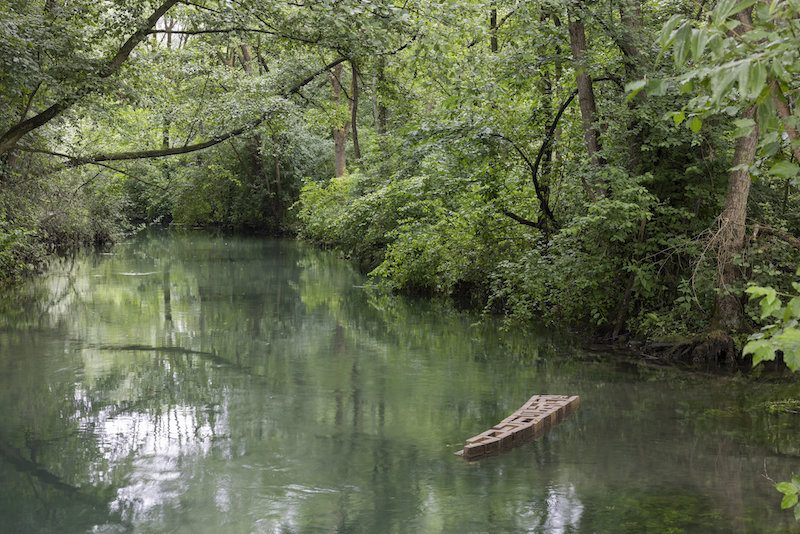
raumlaborberlin mit Zhenru Liang: ‘Sedimente – Insel 1,’ 2025, installation view in ‘Der Fluss bin ich’ // Photo by Hanna Neander
In an interview for Mousse magazine, Astrida Neimanis, the feminist scholar behind the concept of hydrofeminism, which explores the interconnectedness of human and non-human bodies through water, explains: “Hydrofeminism, having learned from many other kinds of ethics and philosophies and ideas around social justice, is not interested in the fact that there is the relation. It wants to ask: What is the benefit and the damage of that relation? How am I accountable for that relationship? What do I owe to it?” ‘Der Fluss bin ich’ succeeds in positing a relationship between the city of Paderborn and the nature surrounding it, and in appealing to its citizens for the protection of the latter. Even so, the legal contract and the blood test end up personifying the river, ultimately still conveying an anthropocentric outlook that feels a bit one-sided and isolated, rather than open-ended. “All of the water that ever was on this planet […] produces endless, unfathomable, unknowable differences,” claims Neimanis. Perhaps, at ‘Der Fluss bin ich,’ instead of aiming for total assimilation, it would have been more productive to acknowledge alterity, and embrace what this may bring to Paderborn’s community and the conversation around its environmental preservation.
Exhibition Info
Tatort Paderborn
Group Show: ‘Der Fluss bin ich’
Exhibition: June 28-Oct. 5, 2025
tatort-paderborn.de
Various Locations, Paderborn, click here for map



